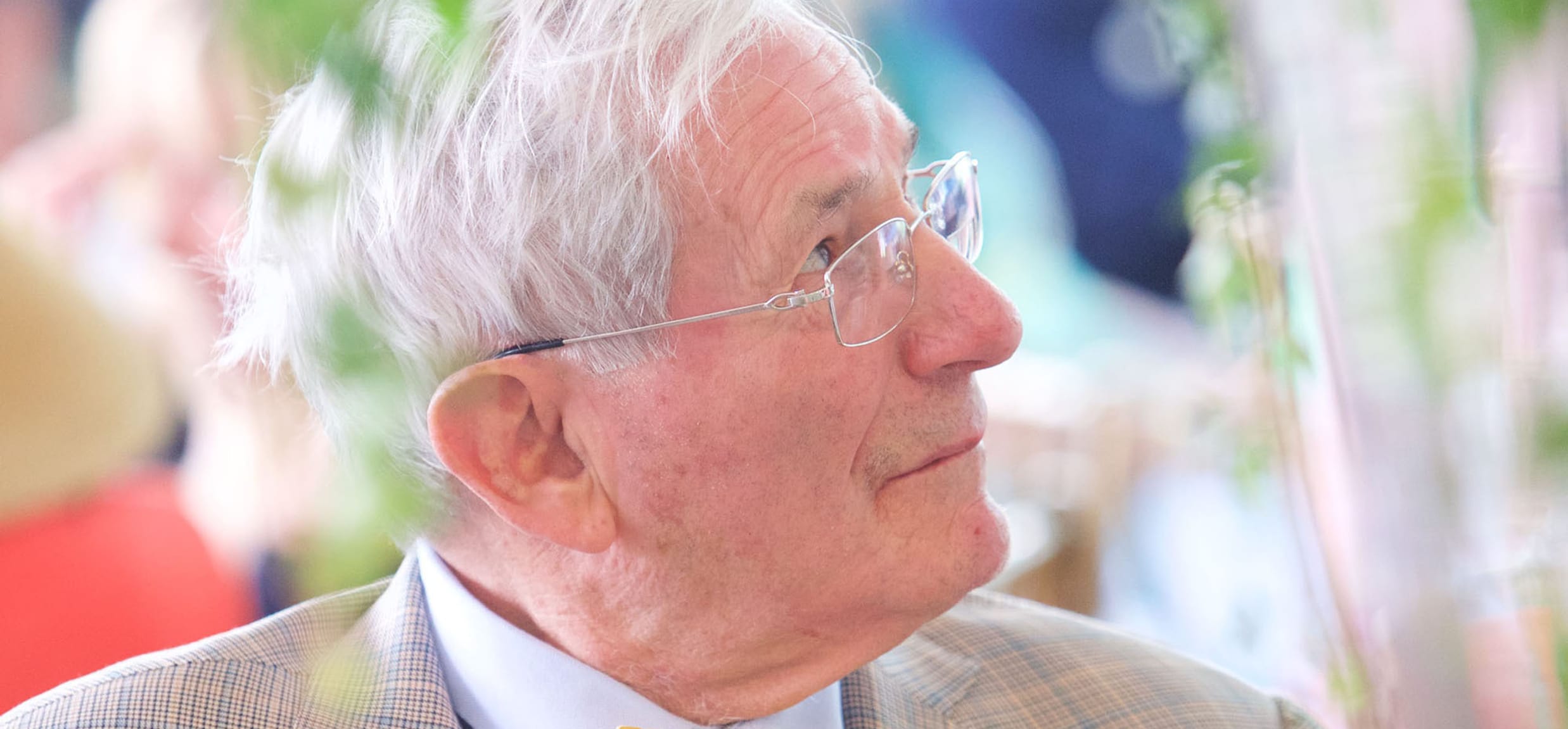Magazine
Remembering One of Central Park’s Earliest Advocates

Editor's note: Our self-guided Richard Gilder Walk features Park landmarks—such as Sheep Meadow and Heckscher Ballfields—that highlight Dick’s 40-year involvement with Central Park and the Conservancy.
This month, Central Park and the Central Park Conservancy lost one of its most ardent supporters: Richard “Dick” Gilder, Jr.
Dick visited Central Park from an early age, and it remained one of his greatest passions in life. The Park was a merging of his deepest personal memories entwined with his profound love of American history. He viewed the Park as one of the country’s most inspiring innovations—and he was dedicated to not just supporting it monetarily, but building a system to support it.

Richard “Dick” Gilder, Jr. and Elizabeth “Betsy” Barlow (now Rogers)—pictured here at the Frederick Law Olmsted Awards Luncheon in 1994—were crucial to the creation of the Central Park Conservancy.
In the 1970s, the Park was in a state of severe decline and lacked adequate care. The perception—and in many cases, the reality—of Central Park was of a lawless and dangerous ruin. To help remedy this, Dick partnered with George Soros to create the Central Park Community Fund, which sought to address the Park’s challenges with private funds and management expertise. The Fund even purchased critically needed equipment for the Park’s day-to-day care, including garbage trucks.
The Fund went on to underwrite a groundbreaking management study in 1974. Written by E.S. Savas (then-professor of public systems management at the Columbia University Graduate School of Business), this study proposed two important next steps to improve conditions in the Park. First, to give a chief executive officer the “clear and unambiguous managerial authority” for all Central Park operations, and second, to create a Central Park Board of Guardians to oversee strategic planning and policy.
This work resulted in the first Central Park Administrator, Elizabeth “Betsy” Barlow (now Rogers), and the creation of the Conservancy in 1980.
Throughout the Conservancy’s 40-year history, Dick continued to be a visionary advisor and passionate supporter of the organization's work. In 1993, he initiated a grant that he challenged the Conservancy and New York City to match as part of the Wonder of New York campaign. This effort raised more than $70 million for the Park, which went toward restoring Summit Rock, Merchants' Gate, Naturalists' Walk, Turtle Pond, the Great Lawn, and the North Meadow, while also contributing to the Conservancy’s operating support and endowment.
Dick was also an avid runner who frequented the Reservoir running track throughout his life. Gilder Run, located on the steps of Bridge No. 24 and connecting the East Drive with the running track, is named after him—a gift from his children.
Central Park’s miraculous transformation is due in large part to Dick. His dedication to improving the Park—and pioneering vision for how to accomplish it—will continue to make a tremendous difference to all New Yorkers and Park visitors for generations to come.
Suggested Reading
-
Park History
How to Engage with the History of Seneca Village
The current movement for racial justice—which includes elevating Black history, culture, and stories—has sparked a renewed interest in Seneca Village, a community of predominantly African-Americans that existed before the creation of Central Park.
Tags: Tips for Visiting / About the Conservancy / Seneca Village



